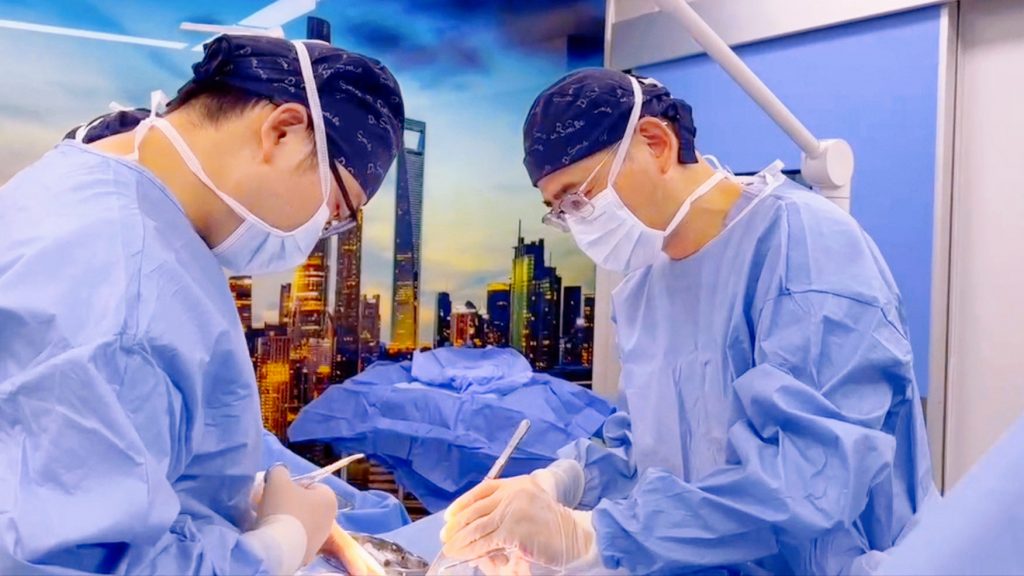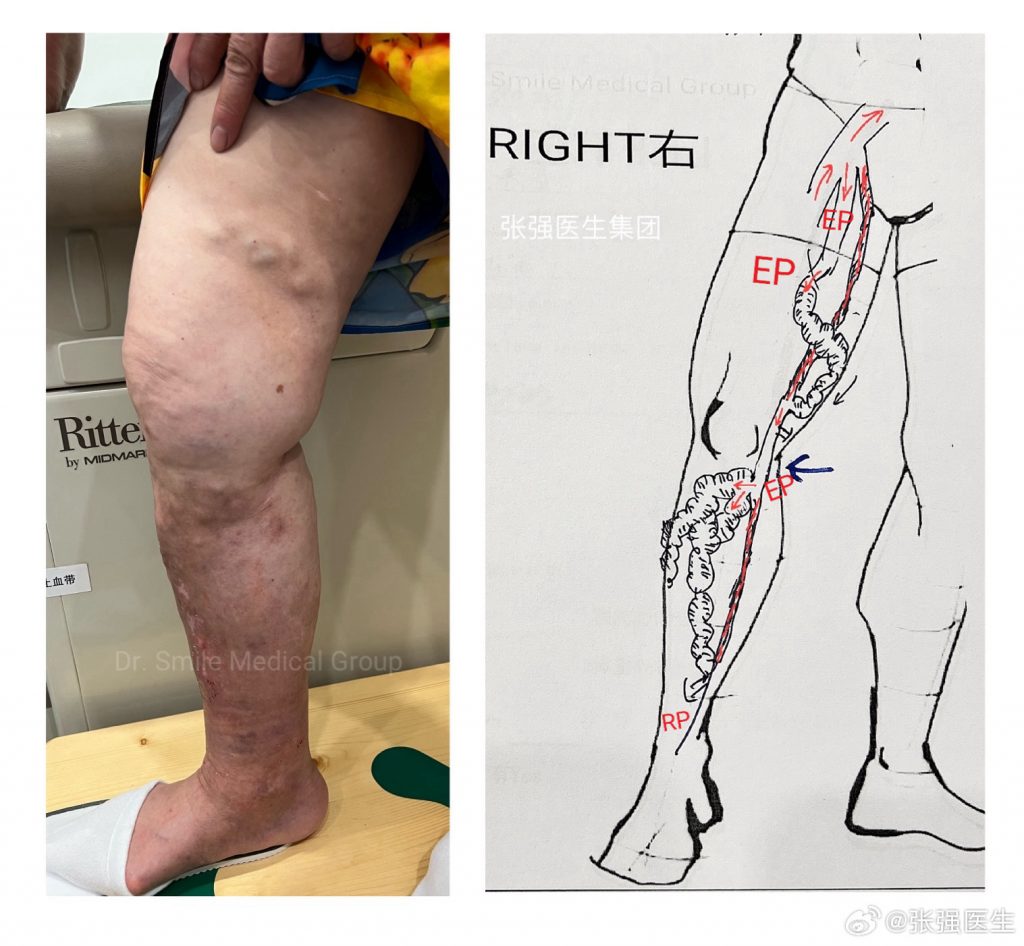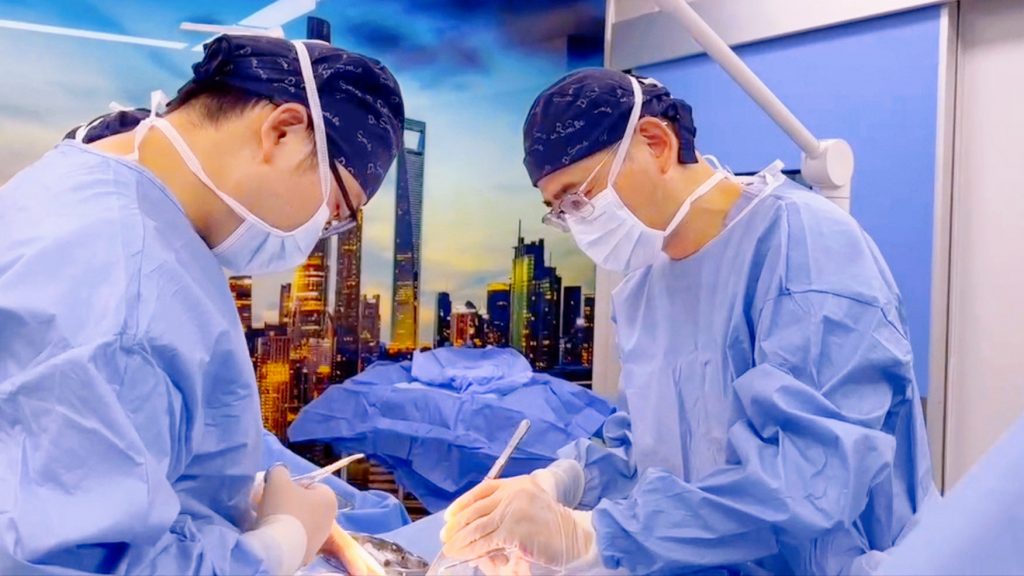Dr. Smile Chang
A 60-year-old professor, who underwent great saphenous vein stripping on the right lower limb five years ago, developed varicose veins in the thigh and calf with associated stasis dermatitis one year ago. Referred by local physicians to Dr. Smile Ven Center, a hemodynamic assessment identified recurrent varicose veins originating from severe reflux in the anterior accessory saphenous vein, with new reflux branches in the residual main trunk. Precise blockage at three Escape points was performed, preserving the patency of the remaining veins.

“Why do varicose veins on the legs recur even after stripping and ablation, and everything seems clean after surgery?” This is a question for many patients and vascular surgeons alike. According to recent literature reviews, the 5-year recurrence rate for varicose vein treatment can be as high as 30-50%.
Initially, the recurrence of varicose veins was attributed to the inexperience of young doctors. However, it was later discovered that even experienced doctors had a high recurrence rate. Therefore, researchers began to consider surgical methods and techniques as potential crucial factors.
Unfortunately, improvements in surgical techniques and instruments have not shown clear evidence of reducing postoperative recurrence rates. Reports on this matter are contradictory, and opinions vary. However, more reliable research results have focused on two areas: (1) hemodynamic factors and (2) the formation of numerous new vessels without valve structures after vein destruction.
In 1988, Professor Franceschi, a pioneer in vascular hemodynamics, first proposed the CHIVA theory, a varicose vein outpatient treatment strategy based on hemodynamic assessment. Subsequently, some doctors worldwide began to study and explore the hemodynamic theory of varicose veins. In 2011, Dr. Smile Chang introduced CHIVA to China and implemented it at Dr. Smile Vein Centers in more than ten cities. In 2020, Dr. Smile Medical Group, in collaboration with the non-profit medical certification organization Inteleos, launched the global CHIVA certification project, receiving responses and support from vein disease experts worldwide. Since then, research on varicose vein recurrence has entered the era of hemodynamics, revealing the true reasons for traditional varicose vein recurrence.
In recent years, nearly 500 cases of postoperative recurrent varicose veins referred from hospitals across the country have been successfully treated at Dr. Smile Vein Centers. The reasons for recurrence in these cases can be broadly categorized into types:
Incorrect vein treatment leading to varicose vein recurrence: If the source of the patient’s varicose veins originates from pelvic veins, small saphenous veins, perforating veins, anterior accessory saphenous veins, or subcutaneous branch vein reflux, traditional treatments such as stripping, laser, radiofrequency ablation, and sclerotherapy might be ineffective.
Correct vein treatment but reperfusion and reflux occur, causing varicose vein recurrence: This situation often arises after sclerotherapy, endovenous laser, and radiofrequency treatments. Veins with incomplete closure, under the influence of vein high pressure, reopen and dilate, with endothelial cell crawling coverage.
Correct vein treatment but new vessel reflux occurs, causing varicose vein recurrence: Destructive surgeries may make varicose veins disappear superficially. Unfortunately, after losing the drainage function of superficial veins, a large number of compensatory new vessels appear. Unlike healthy veins, these new vessels lack valve structures to prevent reflux.
New reflux sources emerge, causing varicose vein recurrence: Just as the likelihood of all four tires of a car experiencing a blowout simultaneously is low, different parts of the venous system in the lower extremities may develop pathology at different times. The appearance of new reflux sources is often related to factors such as obesity, weight-bearing, weakened valve strength, and reduced calf muscle pump intensity.

Therefore, determining the true reasons behind varicose vein recurrence after surgery is crucial. Duplex Hemodynamic assessment provides the best tool for correctly addressing recurrent varicose veins at the source. The application of CHIVA technology offers hope by effectively reducing vein high pressure. A reasonable and correct strategy for varicose vein treatment, based on hemodynamic assessment, can help control the recurrence rate to less than 5%.
